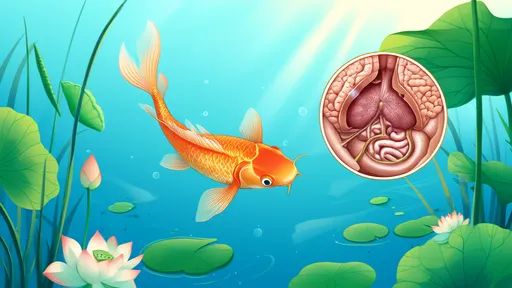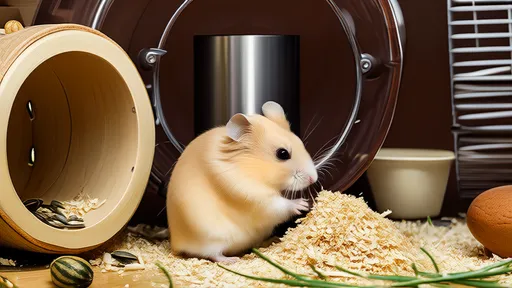Maintaining optimal water quality is the cornerstone of keeping goldfish healthy and vibrant. These delicate creatures rely heavily on their aquatic environment, and even minor imbalances can lead to stress, disease, or shortened lifespans. Unlike many other pets, goldfish cannot escape poor water conditions, making it the owner’s responsibility to ensure their habitat remains clean and stable.
The foundation of goldfish care begins with understanding the nitrogen cycle. Waste produced by goldfish, uneaten food, and decaying plant matter release ammonia into the water, a toxic compound that can quickly prove fatal. Beneficial bacteria convert ammonia into nitrites, which are still harmful, and then into nitrates, a less toxic byproduct. Establishing a well-cycled tank before introducing goldfish is non-negotiable. Rushing this process often results in "new tank syndrome," where ammonia spikes endanger the fish.
Filtration plays a pivotal role in maintaining water quality. Goldfish are messy eaters and produce substantial waste, necessitating a robust filtration system. Canister filters or high-capacity hang-on-back filters are ideal, as they provide mechanical, chemical, and biological filtration. Mechanical filtration removes debris, chemical filtration neutralizes impurities through activated carbon or other media, and biological filtration harbors the beneficial bacteria essential for breaking down toxins. Over-filtering is preferable to under-filtering when it comes to goldfish tanks.
Regular water changes are another critical aspect of goldfish care. Even with an efficient filter, nitrates accumulate over time and must be diluted. A weekly water change of 30-50% is recommended for most setups, though heavily stocked tanks may require more frequent changes. Always treat tap water with a dechlorinator before adding it to the tank, as chlorine and chloramines harm both fish and beneficial bacteria. Sudden large water changes can shock goldfish, so consistency is key.
Monitoring water parameters is non-negotiable for serious goldfish keepers. Test kits for ammonia, nitrites, nitrates, pH, and hardness should be used weekly. Ideal levels are 0 ppm ammonia, 0 ppm nitrites, and under 40 ppm nitrates. Goldfish thrive in a pH range of 7.0-7.4, though they can adapt to slightly higher or lower values if changes are gradual. KH (carbonate hardness) stabilizes pH and should be maintained at 70-140 ppm to prevent dangerous pH swings.
Overcrowding is a common mistake that sabotages water quality. Goldfish grow significantly and require ample space—a single fancy goldfish needs at least 20 gallons, with an additional 10 gallons per extra fish. Slim-bodied varieties like comets demand even more room due to their size and activity levels. Overstocking leads to rapid waste accumulation, oxygen depletion, and increased aggression, all of which degrade water conditions.
Temperature regulation is often overlooked in goldfish care. While they are cold-water fish, extremes and fluctuations are dangerous. Maintain temperatures between 65-72°F (18-22°C) for optimal health. Sudden drops can weaken immune systems, while prolonged high temperatures accelerate metabolism, increasing waste production. In warmer climates, aquarium chillers or fans may be necessary to prevent overheating.
Live plants can assist in maintaining water quality by absorbing nitrates and providing oxygen, but goldfish are notorious for uprooting or eating them. Hardy species like anubias or java fern, attached to decor, often withstand goldfish attention. Alternatively, floating plants like water lettuce absorb excess nutrients while offering shade. If using artificial plants, choose soft silicone varieties to prevent fin damage.
Feeding practices directly impact water quality. Overfeeding is a leading cause of ammonia spikes and cloudy water. Goldfish should be fed small portions 2-3 times daily, with all food consumed within two minutes. High-quality sinking pellets are preferable to floating foods, as they reduce air ingestion and subsequent buoyancy issues. Occasional treats like blanched vegetables provide variety without compromising water quality when uneaten portions are promptly removed.
Seasoned goldfish keepers recognize subtle behavioral cues that indicate water quality issues. Gasping at the surface suggests low oxygen or high toxins, while clamped fins or lethargy often signal poor conditions. Red streaks on fins or body may indicate ammonia burns. Observant owners who act on these early warnings can prevent full-blown health crises through prompt water testing and corrective measures.
Quarantine procedures protect both new and existing fish while preserving water quality. New arrivals should be isolated for 4-6 weeks to monitor for diseases that could spread to the main tank. Similarly, treating sick fish in a separate hospital tank prevents medication from disrupting the biological filter in the display aquarium. This practice also allows for more aggressive treatments without harming beneficial bacteria colonies.
Long-term goldfish care demands patience and consistency. While initial setup and cycling require attention to detail, maintaining pristine water becomes routine with proper habits. Investing in quality equipment, establishing a maintenance schedule, and learning to interpret water test results ultimately lead to thriving goldfish that showcase their full beauty and personality. The reward for this diligence is a dynamic aquatic display that can bring joy for decades.

By /Jun 28, 2025

By /Jun 28, 2025

By /Jun 28, 2025

By /Jun 28, 2025

By /Jun 28, 2025

By /Jun 28, 2025

By /Jun 28, 2025

By /Jun 28, 2025

By /Jun 28, 2025

By /Jun 28, 2025

By /Jun 28, 2025

By /Jun 28, 2025

By /Jun 28, 2025

By /Jun 28, 2025

By /Jun 28, 2025

By /Jun 28, 2025

By /Jun 28, 2025

By /Jun 28, 2025